-
 Bitcoin
Bitcoin $94,175.9341
-0.45% -
 Ethereum
Ethereum $1,797.2526
-1.80% -
 Tether USDt
Tether USDt $0.9998
-0.02% -
 XRP
XRP $2.0914
-4.02% -
 BNB
BNB $597.8377
0.98% -
 Solana
Solana $144.2395
-1.61% -
 USDC
USDC $1.0000
0.00% -
 Dogecoin
Dogecoin $0.1677
-3.47% -
 TRON
TRON $0.2453
-0.99% -
 Cardano
Cardano $0.6564
-4.59% -
 Sui
Sui $3.2963
-4.27% -
 Chainlink
Chainlink $13.4246
-4.69% -
 Avalanche
Avalanche $19.6453
-1.56% -
 UNUS SED LEO
UNUS SED LEO $8.6682
-4.59% -
 Stellar
Stellar $0.2563
-4.26% -
 Toncoin
Toncoin $2.9933
-1.17% -
 Shiba Inu
Shiba Inu $0.0...01252
-3.20% -
 Hedera
Hedera $0.1726
-2.80% -
 Bitcoin Cash
Bitcoin Cash $359.1546
-0.22% -
 Hyperliquid
Hyperliquid $19.9280
-3.34% -
 Litecoin
Litecoin $81.7450
-8.38% -
 Polkadot
Polkadot $3.8700
-2.94% -
 Dai
Dai $1.0001
0.01% -
 Monero
Monero $284.8938
2.89% -
 Bitget Token
Bitget Token $4.2954
-0.62% -
 Ethena USDe
Ethena USDe $1.0002
0.00% -
 Pi
Pi $0.5866
-1.01% -
 Pepe
Pepe $0.0...07897
-5.11% -
 Bittensor
Bittensor $370.6814
1.71% -
 Uniswap
Uniswap $4.8861
-4.02%
Virtual currency exchange wallet address
Virtual currency exchange wallet addresses, analogous to bank account numbers, offer a unique identifier for secure storage and transfer of digital assets, requiring prudent security measures to safeguard against unauthorized access.
Jan 12, 2025 at 10:38 pm
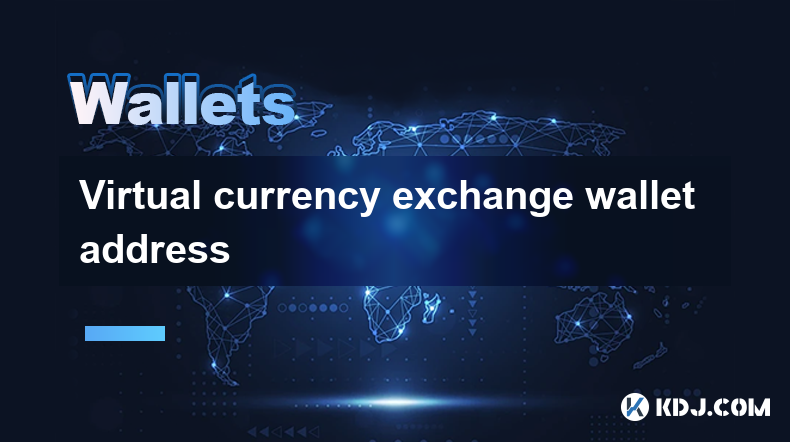
Virtual Currency Exchange Wallet Address
Key Points:
- Importance of using a reputable exchange
- Understanding the different types of wallet addresses
- Generating and managing a secure wallet address
- Best practices for protecting your virtual currency
- Troubleshooting common wallet-related issues
Understanding Wallet Addresses
A wallet address is a unique identifier used to receive or send virtual currency. It is analogous to a bank account number, allowing users to store and transact with their digital assets. Each wallet address is associated with a specific user and should only be used by that user.
Generating a Wallet Address
Most virtual currency exchanges provide users with a wallet address upon account creation. This address is typically generated randomly and is unique to each user. Users can also create multiple wallet addresses if desired, for added security or for managing different types of virtual currency.
Storing Virtual Currency
Once you have generated a wallet address, you can store your virtual currency in it securely. Wallet addresses are typically stored on a digital device, such as a hardware wallet, software wallet, or mobile wallet app. These devices provide additional security measures to protect your private keys and ensure the safety of your assets.
Sending and Receiving Virtual Currency
To send virtual currency to another user, you will need their wallet address. You can then initiate a transaction through your exchange or wallet and specify the amount you wish to send. The recipient will typically receive the funds within a few minutes, depending on the network congestion and the transaction fees set.
To receive virtual currency, simply provide your wallet address to the sender. They can then initiate a transaction and send you the funds. Once the transaction is processed, the funds will appear in your wallet balance.
Protecting Your Wallet Address
Your wallet address should be kept secure at all times. Never share your private key or seed phrase with anyone, as this could compromise your account and allow unauthorized access to your funds.
- Use a reputable virtual currency exchange
- Enable two-factor authentication (2FA) for added security
- Store your private keys offline in a secure location
- Regularly review your transaction history for any suspicious activity
- Be cautious of phishing scams and other malicious attempts to obtain your wallet address
Troubleshooting Common Wallet Issues
If you are experiencing any issues with your wallet address, here are some troubleshooting tips:
- Check the transaction history to confirm the status of any pending transactions
- Verify that you are using the correct wallet address for the virtual currency you are trying to send or receive
- Ensure that your internet connection is stable and reliable
- Restart your wallet app or device
- Contact the support team of your exchange for further assistance
FAQs:
- What is the purpose of a virtual currency exchange wallet address?
A virtual currency exchange wallet address is a unique identifier used to receive or send virtual currency. It is typically generated by the exchange upon account creation and is unique to each user.
- How do I find my wallet address?
You can find your wallet address by logging into your virtual currency exchange account and navigating to the "My Wallet" section. The address will be displayed there.
- Can I use my wallet address to receive funds from different virtual currency exchanges?
No, you cannot use your wallet address to receive funds from different virtual currency exchanges. Each exchange generates its own unique wallet addresses, and funds can only be sent from an exchange to another address on the same exchange.
- What is the best way to protect my wallet address?
The best way to protect your wallet address is to keep it secure at all times. Never share your private key or seed phrase with anyone, and store your keys offline in a secure location.
- What should I do if I lose my wallet address?
If you lose your wallet address, you will need to contact the support team of your virtual currency exchange. They may be able to help you recover your funds if you provide them with sufficient proof of ownership.
Disclaimer:info@kdj.com
The information provided is not trading advice. kdj.com does not assume any responsibility for any investments made based on the information provided in this article. Cryptocurrencies are highly volatile and it is highly recommended that you invest with caution after thorough research!
If you believe that the content used on this website infringes your copyright, please contact us immediately (info@kdj.com) and we will delete it promptly.
- Trump set to hold gala dinner for memecoin holders as criticism and impeachment talk grow.
- 2025-05-06 16:25:12
- 3 Reasons Why Kaspa (KAS) Price Is Flat Following the Crescendo Update
- 2025-05-06 16:25:12
- 🚨 $BTC /USDT – Bullish or Bearish Divergence at Play? 🔥
- 2025-05-06 16:20:12
- Ethereum (ETH) Price Prediction: Market Dynamics Suggest the Long-term Uptrend Remains Intact
- 2025-05-06 16:20:12
- Bitcoin (BTC) Price Prediction: BTC Slumps Below $98,000 Resistance, Targeting $93,500 Support
- 2025-05-06 16:15:12
- Pre-emptive Bug Fixes to ZK ElGamal Proof Program
- 2025-05-06 16:15:12
Related knowledge
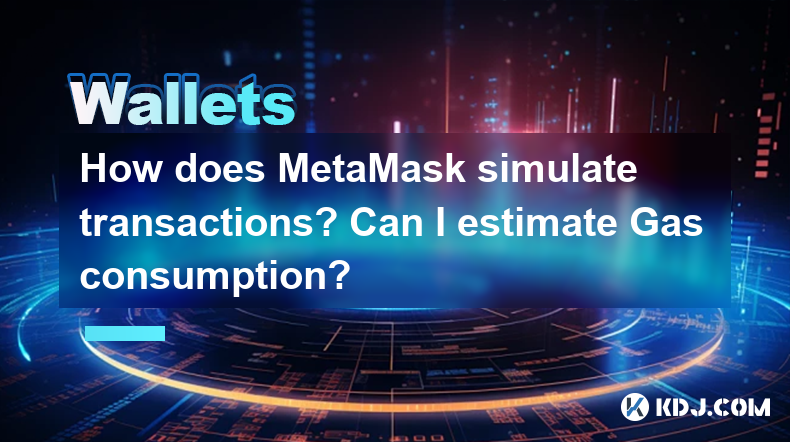
How does MetaMask simulate transactions? Can I estimate Gas consumption?
May 06,2025 at 03:49pm
How does MetaMask simulate transactions? Can I estimate Gas consumption?MetaMask, a popular Ethereum wallet and gateway to blockchain applications, offers users the ability to simulate transactions and estimate gas consumption before they are executed on the Ethereum network. This feature is crucial for users to understand the potential costs and outcom...
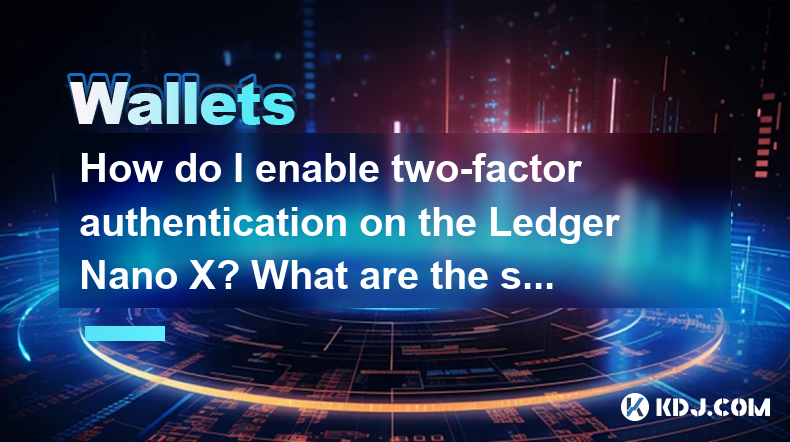
How do I enable two-factor authentication on the Ledger Nano X? What are the security options?
May 02,2025 at 09:49pm
Enabling two-factor authentication (2FA) on your Ledger Nano X is a critical step in securing your cryptocurrency assets. The Ledger Nano X offers robust security options that enhance the protection of your digital wealth. In this article, we will guide you through the process of enabling 2FA on your Ledger Nano X and explore the various security featur...
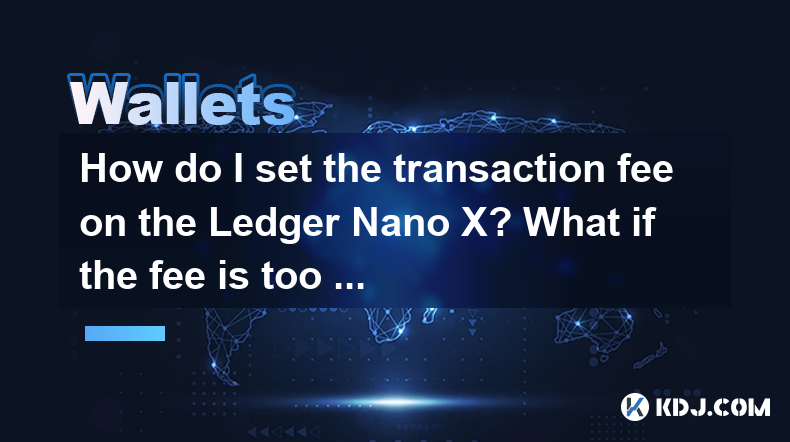
How do I set the transaction fee on the Ledger Nano X? What if the fee is too high?
May 05,2025 at 09:21pm
Setting the transaction fee on your Ledger Nano X is an essential part of managing your cryptocurrency transactions efficiently. The transaction fee directly impacts how quickly your transaction is processed and confirmed on the blockchain. In this guide, we will walk you through the steps to set the transaction fee on your Ledger Nano X, and what to do...
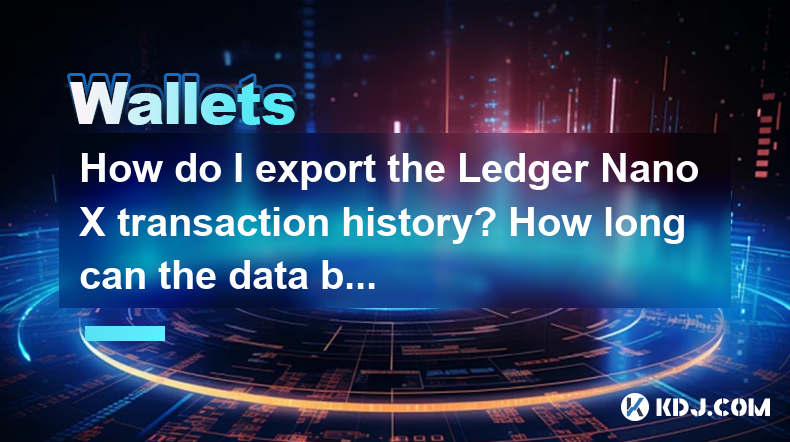
How do I export the Ledger Nano X transaction history? How long can the data be saved?
May 04,2025 at 07:21am
Introduction to Ledger Nano X and Transaction HistoryThe Ledger Nano X is a hardware wallet designed to store your cryptocurrency safely. It supports a wide range of cryptocurrencies and offers robust security features. One of the essential aspects of managing your cryptocurrencies is keeping track of your transaction history. The Ledger Nano X allows y...
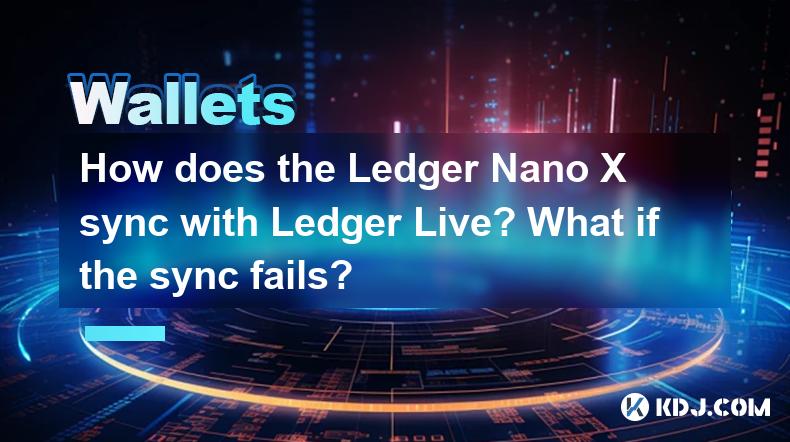
How does the Ledger Nano X sync with Ledger Live? What if the sync fails?
May 04,2025 at 12:07pm
The Ledger Nano X is a popular hardware wallet that allows users to securely manage their cryptocurrency assets. One of the key features of the Ledger Nano X is its ability to sync with the Ledger Live application, which provides a user-friendly interface for managing your crypto portfolio. In this article, we will explore how the Ledger Nano X syncs wi...
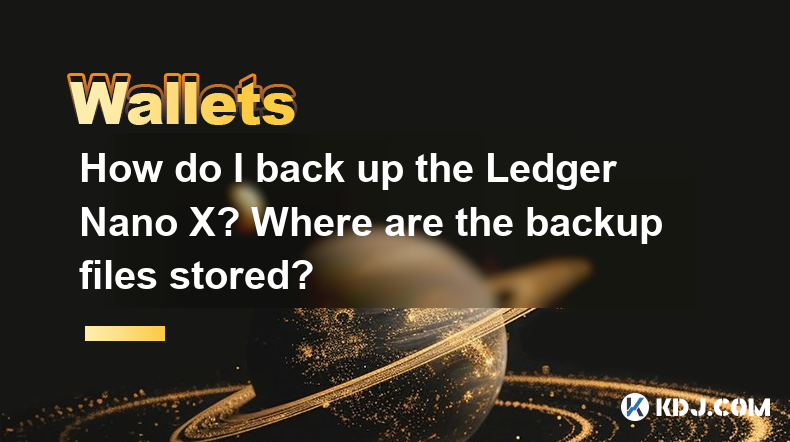
How do I back up the Ledger Nano X? Where are the backup files stored?
May 06,2025 at 09:07am
Introduction to Backing Up Your Ledger Nano XBacking up your Ledger Nano X is crucial for safeguarding your cryptocurrencies. A backup ensures that you can recover your funds if your device is lost, stolen, or damaged. In this article, we will delve into the step-by-step process of backing up your Ledger Nano X, as well as where the backup files are sto...

How does MetaMask simulate transactions? Can I estimate Gas consumption?
May 06,2025 at 03:49pm
How does MetaMask simulate transactions? Can I estimate Gas consumption?MetaMask, a popular Ethereum wallet and gateway to blockchain applications, offers users the ability to simulate transactions and estimate gas consumption before they are executed on the Ethereum network. This feature is crucial for users to understand the potential costs and outcom...

How do I enable two-factor authentication on the Ledger Nano X? What are the security options?
May 02,2025 at 09:49pm
Enabling two-factor authentication (2FA) on your Ledger Nano X is a critical step in securing your cryptocurrency assets. The Ledger Nano X offers robust security options that enhance the protection of your digital wealth. In this article, we will guide you through the process of enabling 2FA on your Ledger Nano X and explore the various security featur...

How do I set the transaction fee on the Ledger Nano X? What if the fee is too high?
May 05,2025 at 09:21pm
Setting the transaction fee on your Ledger Nano X is an essential part of managing your cryptocurrency transactions efficiently. The transaction fee directly impacts how quickly your transaction is processed and confirmed on the blockchain. In this guide, we will walk you through the steps to set the transaction fee on your Ledger Nano X, and what to do...

How do I export the Ledger Nano X transaction history? How long can the data be saved?
May 04,2025 at 07:21am
Introduction to Ledger Nano X and Transaction HistoryThe Ledger Nano X is a hardware wallet designed to store your cryptocurrency safely. It supports a wide range of cryptocurrencies and offers robust security features. One of the essential aspects of managing your cryptocurrencies is keeping track of your transaction history. The Ledger Nano X allows y...

How does the Ledger Nano X sync with Ledger Live? What if the sync fails?
May 04,2025 at 12:07pm
The Ledger Nano X is a popular hardware wallet that allows users to securely manage their cryptocurrency assets. One of the key features of the Ledger Nano X is its ability to sync with the Ledger Live application, which provides a user-friendly interface for managing your crypto portfolio. In this article, we will explore how the Ledger Nano X syncs wi...

How do I back up the Ledger Nano X? Where are the backup files stored?
May 06,2025 at 09:07am
Introduction to Backing Up Your Ledger Nano XBacking up your Ledger Nano X is crucial for safeguarding your cryptocurrencies. A backup ensures that you can recover your funds if your device is lost, stolen, or damaged. In this article, we will delve into the step-by-step process of backing up your Ledger Nano X, as well as where the backup files are sto...
See all articles




















































































